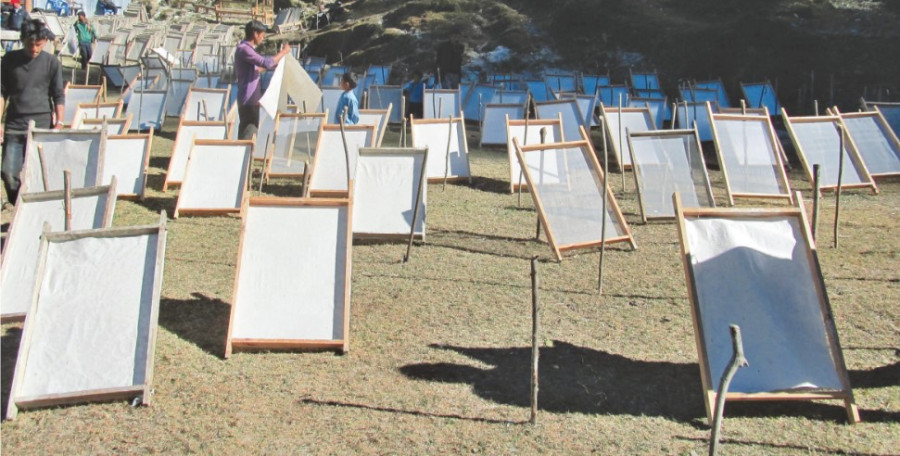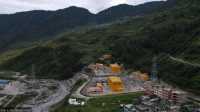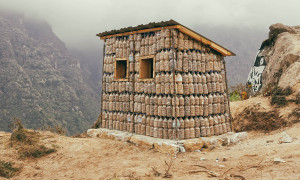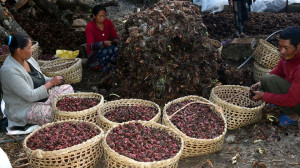Money
Nepal’s central bank proposes peer-to-peer lending to support MSMEs growth
For the micro, small and medium enterprises in Nepal, the estimated financing gap is $3.6 billion.
Post Report
Nepal has a substantial funding gap for startups due to existing constraints related to financial resources, a recent study has shown.
The study report on P2P lending and crowdfunding released by the Nepal Rastra Bank on Sunday shows that the funding gap stands as one of the biggest obstacles for the micro, small and medium enterprises (MSMEs) to start, sustain and grow.
To minimize the gap, the central bank has conceptualised an alternative avenue of financing through peer-to-peer (P2P) lending.
The report aimed to analyse the regulatory provisions and the country’s practices related to P2P lending as well as assess the risks, effects, and preconditions associated with it.
The study has been conducted to explore the relevance and feasibility of P2P lending and crowdfunding platforms for startups in Nepal, according to a central bank official.
P2P lending is a form of direct lending to individuals or businesses without an official financial institution participating as an intermediary in the deal. P2P lending is generally done through online platforms that match lenders with potential borrowers.
“The startups deprived of financial resources will find P2P lending as an alternative financial dimension in the market,” said Prakash Kumar Shrestha, executive director of the Economic Research Department at Nepal Rastra Bank.
P2P lending is appropriate for alternative finance, financial inclusion and access, he said.
The establishment of P2P lending will create options and choices for people to fulfil their financial needs, Shrestha said.
“It will also create competitiveness in the financial market and compel banks to become more competitive and increase their efficiency.”
As P2P lending is a digital financing service, which will be cost-effective for people in need of financial assistance.
“It is a small part of the digital bank. P2P lending will reduce intermediation costs, which means more profit for depositors or lenders and less cost for borrowers,” said Shrestha.
There are risks but to minimize certain risks in P2P lending, certain regulations need to be issued by the central bank, he said.
“Once the operation is legalised, the risk will lessen. The operational model can be made formal by preparing rules for licensing, operations and monitoring.”
“As MSMEs and startups are generally ignored by banks for financial service due to insufficient collateral, they can mobilise resources from alternative avenues like P2P lending,” said Shrestha.
P2P lending is being practised globally.
“Once we receive feedback on the study report and demand of P2P lending, the higher authority will work on it further,” said Shrestha.
In Asia, South Korea, Malaysia, India, China, Indonesia, and Thailand have passed regulatory frameworks for P2P lending with a clear directive on the capital requirement and borrowing limits, the report said.
Countries have introduced the minimum paid-up capital requirement. However, the range of paid-up capital significantly varies across the countries reviewed.
Fulfillment of preconditions such as credit score, credit history, ownership of assets, existing debts, debt servicing to income ratio, details of employment, and number of bank accounts is crucial for the successful operation of P2P platforms, according to the report.
P2P lending is a relatively new concept in Nepal, and the study report blamed the limited financial infrastructure in the country for hindering the effectiveness of P2P lending.
P2P platforms require highly disaggregated information about the borrower such as credit history, demographic and community characteristics, among others, to make a judgment on credit requests, the study report said.
The success rate of P2P lending is directly proportional to the availability of information about the borrower. Therefore, underdeveloped financial infrastructure inhibits the growth of P2P lending.
“To promote alternative sources and investors, and to create competitiveness, it is better to move forward to embrace new forms of financial intermediation,” the report said.
New channels, such as crowdfunding and P2P lending, could be highly suitable for addressing the requirements of MSMEs, nano-vendors, and even individuals who are constrained by collateral or fail to clear rigorous criteria stipulated by banks and financial institutions.
The financing gap for MSMEs in Nepal is estimated at $3.6 billion, with only around $731 million currently available, the study report said.
According to the SMEs Financing Report 2019, 59 percent of small enterprises in Nepal have loans amounting to less than Rs2.5 million.
According to the central bank, only 16 percent of startups have access to capital from banking and financial institutions, and the major source of financing for startups was from their ancestral properties (33.1 percent) followed by personal savings (25.8 percent).
The existing financial gap can be attributed to several factors, including asymmetric information, the existence of informal business practices, market heterogeneity and the sluggish growth in productivity of MSMEs.




 13.12°C Kathmandu
13.12°C Kathmandu












%20(1).jpg&w=300&height=200)
